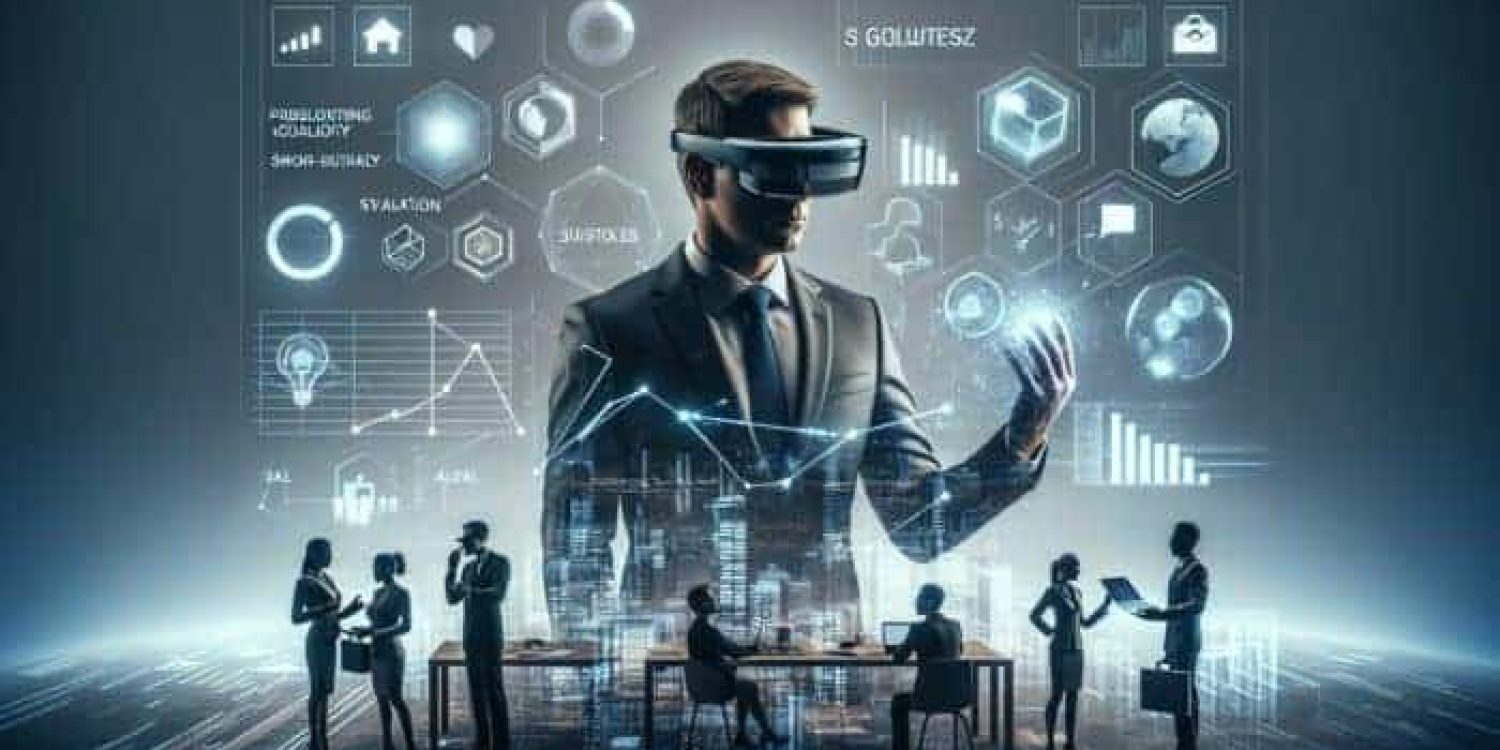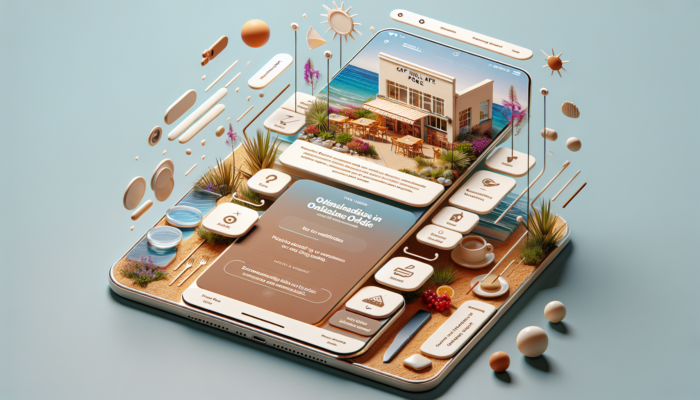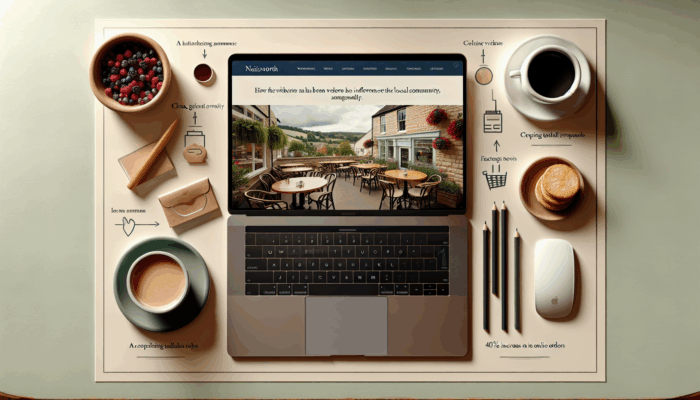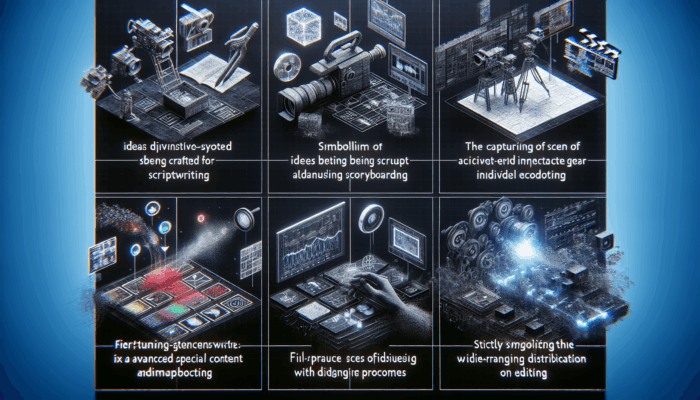Harnessing Augmented Reality for Accelerated Growth in Small Businesses
In recent years, augmented reality (AR) has shifted from being viewed as a gimmick exclusive to technology giants in Silicon Valley or a niche in video gaming. For numerous small business owners, it once appeared to be an extravagant indulgence, seemingly out of reach financially. However, upon entering a café in Cape Town, browsing a boutique in London, or visiting a hair salon in Yeovil, you may witness how AR experiences are revolutionising the way customers browse, try, and ultimately purchase products, making it an integral part of the retail landscape.
AR has transitioned from a futuristic notion to a vital and accessible instrument essential for business expansion. Small enterprises that previously depended solely on competitive pricing or personalised service are now able to leverage the same interactive technologies that have propelled notable brands like IKEA, Sephora, and Warby Parker into prominence. The remarkable development today is that integrating AR into your business strategy no longer requires a multimillion-pound budget.
So, what are the implications of AR for small business growth, and how can it be effectively harnessed to your benefit? Let’s explore this captivating topic further.
Table of Contents
ToggleWhat Factors Have Made AR a Viable Tool for Small Businesses?

The accessibility of AR for small businesses has significantly increased as the major barriers that once hindered its adoption—such as high costs, necessary hardware, and consumer readiness—have considerably diminished. The technology has become more budget-friendly, with smartphones now typically featuring AR capabilities. Additionally, the pandemic has led to a heightened consumer expectation for richer and more immersive digital experiences, particularly as online shopping surged.
Just a decade ago, launching an AR campaign required a dedicated development team and specialised equipment. In contrast, today’s no-code platforms like ZapWorks and Spark AR allow a café owner or local shopkeeper to craft their own interactive filters and experiences without needing to write a single line of code. Modern smartphones now have the processing capabilities to deliver 3D previews instantly. Most importantly, consumers have become more comfortable engaging with interactive digital content due to the changes in shopping habits brought about by COVID-19.
This “perfect storm” of affordability, widespread hardware accessibility, and evolving customer expectations signifies that AR has transitioned from a futuristic concept into a practical, everyday tool that can be utilised effectively.
How Can AR Empower Small Businesses to Gain a Competitive Edge?
AR provides small businesses with a unique competitive edge by allowing them to present themselves as innovative and memorable, even in the absence of the vast resources typically available to larger corporations. When customers encounter something fresh and engaging, they are more likely to remember it, leading them to opt for that brand over its competitors.
For instance, the eyewear industry saw Warby Parker pioneering AR glasses try-ons before established high-street competitors like Specsavers could catch up. This strategic foresight cemented their status as retail innovators. Today, independent opticians can replicate this impact by utilising Instagram filters at a fraction of the cost.
The furniture retail sector showcases another illustrative example. The IKEA Place app enables customers to visualise sofas in their homes before making a purchase decision. This was revolutionary upon its launch, but currently, platforms like Shopify are providing AR previews for any merchant. Even a single-store furniture retailer can now compete in terms of innovation perception that was once the domain of multinational corporations.
This leveling effect is transformative. AR can turn a boutique shop into a cutting-edge destination, a salon into a high-tech experience, and a local café into a futuristic establishment. For many small businesses, this enhanced perception fosters customer loyalty and encourages repeat visits, creating a community of loyal patrons.
What Impact Does AR Have on Customer Engagement Levels?
AR revolutionises customer engagement by converting passive browsing into dynamic exploration. Rather than merely viewing static product images, customers can virtually try, position, or interact with products before making a decision—and this interaction directly contributes to heightened confidence in their purchasing choices.
The effectiveness of virtual try-ons is evident in a boutique located in London, which provided AR sunglasses previews via Instagram, enabling customers to swipe through various styles and visually assess how each pair appeared on them. The result? A staggering 27% increase in sales within three months, accompanied by a significant reduction in return rates. Reports from Shopify indicate that merchants incorporating AR or 3D previews into their offerings experience nearly double the conversion rates compared to those relying solely on flat images.
In the food and hospitality sectors, AR has also been effectively employed. For example, pizzerias in New York now allow diners to scan QR codes to reveal animated 3D dishes. This simple feature has led to over a 20% increase in orders for premium toppings. Similarly, a bakery in Manchester created an AR scavenger hunt during Easter, encouraging customers to scan codes hidden throughout the shop, which resulted in a nearly 20% increase in foot traffic and a surge of social media engagement.
The conclusion is clear: customers engage more deeply when they have the opportunity to interact with products. When customers are engaged, they are significantly more likely to make purchases and return for future transactions.
Can AR Elevate Personalised Marketing Strategies for Small Businesses?

Absolutely. AR transforms marketing into an interactive and personalised experience, allowing customers to engage with offers and promotions in ways that traditional static advertisements simply cannot match. This level of interactivity enhances recall and turns campaigns into enjoyable experiences that resonate with customers.
For instance, a café located in Cape Town executed a campaign where pedestrians scanning a poster outside their establishment could unlock a virtual coffee voucher. The redemption rates skyrocketed to three times higher than conventional paper flyers. In Yeovil, a salon created an AR hairstyle filter for Instagram, which quickly spread through local networks and resulted in a 15% increase in bookings within just two weeks.
Moreover, Starbucks has explored AR-powered loyalty programmes where customers accumulate digital stamps. Independent cafés have since emulated this idea using free AR tools, offering an added element of excitement alongside their daily brew, thus enhancing customer engagement.
In contrast to traditional advertising methods which often disrupt, AR campaigns actively invite users to participate. Customers are not merely passive observers; they become active participants in the experience. This active involvement increases the likelihood that they will remember, share, and act upon the experience, leading to enhanced brand loyalty.
How Can AR Streamline Internal Business Operations for Efficiency?
AR not only enhances customer-facing aspects of a business; it significantly improves internal efficiencies as well. For many small enterprises, processes such as staff training, stock management, and maintenance tasks can be ongoing drains on time and resources. AR introduces innovative methods to streamline these processes, providing a more efficient operational framework.
Training: Onboarding can be both costly and inconsistent. With AR, staff members can follow step-by-step overlays in real-world environments. For instance, a new barista can learn to operate the espresso machine by following visual instructions displayed directly on the machine itself. Research from Deloitte indicates that AR training can reduce onboarding time by 40% and enhance knowledge retention compared to conventional training manuals.
Inventory Management: Retailers and small supermarkets are leveraging AR to visualise stock levels and identify missing products. Staff can scan shelves and immediately see what needs restocking. Pilot programmes in Europe have demonstrated time savings of 20–30% during stock checks, alongside a reduction in waste.
Maintenance: Equipment breakdowns can severely impact small businesses. With AR overlays, staff can quickly troubleshoot issues. A café can resolve problems with its coffee machine, a gym can maintain its treadmills, and an auto shop can diagnose faults more efficiently. This capability reduces downtime and saves costs associated with emergency call-outs, thereby improving operational continuity.
By integrating AR behind the scenes, businesses can eliminate inefficiencies and free up valuable time for what truly matters: providing exceptional service to their customers.
What Budget-Friendly AR Tools Are Available for Small Businesses?
Contrary to common perceptions, AR does not necessitate a custom app or a hefty budget. Numerous accessible tools are currently available:
| Tool | Best Use Case | Cost |
|---|---|---|
| Spark AR (Meta) | Create Instagram/Facebook filters | Free |
| Lens Studio (Snapchat) | Develop viral AR lenses | Free |
| Shopify AR | Incorporate 3D product previews into stores | Included with Shopify |
| ZapWorks | No-code AR campaign creation | Subscription-based |
| PlugXR | Rapid AR prototyping | Free & paid tiers |
| Canva Smartmockups | User-friendly AR visuals for marketing | Part of Canva Pro |
Furthermore, freelancers and agencies provide affordable custom AR development services. On platforms like Upwork, small businesses can connect with specialists to create tailored AR campaigns for under £1,000. This pricing structure firmly positions innovation within reach of independent retailers and service providers, allowing them to compete effectively.
How Can Small Businesses Kickstart Their AR Implementation Journey?

The most effective way to embark on your AR journey is to pinpoint a specific problem that AR can effectively solve, demonstrate the results, and then gradually expand upon those achievements. Many businesses complicate their initial steps, leading to stalled progress. A more effective strategy is to take an incremental approach, allowing for manageable growth.
-
Identify a Pain Point. Are customers hesitant to purchase? Implement AR previews. Is training taking too long? Use AR for onboarding. Do you need to drive more foot traffic? Launch an AR filter to attract attention.
-
Select a Tool. If your target audience is on Instagram, commence with Spark AR. If you operate an e-commerce store, explore Shopify AR for seamless integration.
-
Develop a Pilot Project. Keep it manageable. Focus on one product preview, one filter, or one AR loyalty reward to test its effectiveness.
-
Evaluate Results. Monitor engagement levels, sales growth, or training efficiency to optimise performance and assess the impact of your AR initiatives.
-
Scale Successful Initiatives. Once you’ve identified what works, expand your offerings to include more products, filters, or processes to enhance customer engagement further.
This “start small, scale big” strategy facilitates low-risk AR adoption and ensures that it aligns closely with tangible business outcomes, paving the way for sustainable growth.
What Will Be the Future Role of AR in Small Business Development?
AR is increasingly becoming a gateway to the metaverse and mixed-reality experiences. While the complete vision of the metaverse is still unfolding, the current adoption of AR is preparing businesses for a future where hybrid digital-physical shopping experiences become the norm.
Technologies such as Apple’s Vision Pro, Meta’s Horizon, and Microsoft’s HoloLens are at the forefront of driving the pursuit of more immersive experiences. Early adopters will be in prime positions to leverage opportunities when AR storefronts, virtual events, and mixed-reality trade shows become mainstream.
Small businesses need not plunge into the metaverse without caution. However, by experimenting with AR today, they can future-proof themselves. When immersive shopping experiences and digital spaces become standard, they will already possess the skills, mindset, and customer trust necessary to thrive in an evolving market.
Is AR a Genuine Growth Catalyst for Small Enterprises?
Certainly—evidence supporting this assertion is mounting. AR enhances conversions by alleviating customer uncertainty. It cultivates loyalty by creating memorable, shareable experiences. Additionally, it streamlines operations by saving time and reducing costs. Importantly, it positions small businesses as local innovators, setting them apart from the competition.
For many owners, the initial experiment presents the greatest challenge. Yet, those who take this crucial step quickly realise that AR is less about flashy technology and more about addressing real challenges in smarter, more effective ways.
Where Should You Start Your AR Journey Today?
For small businesses, AR has transformed from a luxury to a practical, affordable engine for growth. There’s no need to create a complex app or invest substantial sums. All that is required is to begin by identifying one specific problem that AR can solve—whether that involves allowing customers to visualise how a sofa would look in their home, enabling diners to see a dish before placing an order, or streamlining the training of a new hire.
From this initial step, the potential for expansion is vast. Businesses that engage in proactive experimentation today will secure a competitive advantage for the future. And because AR levels the playing field, this advantage is not solely reserved for multinationals. It is accessible to the café, the salon, the bookshop, and the local service provider that dares to take the lead.
Thus, the pressing question is not “should small businesses implement AR?” but rather “which AR experience will you launch this month?”
Frequently Asked Questions About AR in Business
What is the Purpose of Augmented Reality in Business?
Augmented reality (AR) overlays digital information onto the physical world via smartphones or AR glasses. For businesses, this enables customers to preview products, interact with engaging advertisements, or enjoy enhanced in-store experiences, thereby enriching the customer journey.
How Can AR Drive Growth for Small Businesses?
AR aids small businesses in boosting sales by minimising purchase uncertainty, attracting more customers through interactive campaigns, and streamlining operational processes such as training and inventory management. It effectively levels the playing field against larger competitors.
Is AR Expensive for Small Businesses to Implement?
Not any longer. Free and reasonably priced AR tools, such as Spark AR, Shopify AR, and ZapWorks, empower small businesses to create engaging experiences without incurring significant financial burdens. Additionally, freelancers offer custom AR projects for under £1,000, making it more accessible.
Can AR Improve Sales Conversions?
Absolutely. Research indicates that AR previews can potentially double conversion rates compared to standard static images. By allowing customers to try or position products virtually, AR reduces hesitation and nurtures confident purchasing decisions.
Does AR Help Decrease Product Returns?
Indeed. Virtual try-ons and previews ensure that customers are well-informed about their purchases before completing their transactions. Retailers employing AR report return rates that have decreased by as much as 40%, resulting in significant time and cost savings.
In What Ways Can AR Enhance Customer Engagement?
AR transforms browsing into an interactive experience. From AR scavenger hunts to 3D menu previews, customers engage more deeply with your brand, sharing their experiences and promoting word-of-mouth referrals, all of which foster increased brand loyalty and advocacy.
Is AR Applicable for Local Marketing Initiatives?
Yes. AR posters, QR codes, and location-based filters enable small businesses to effectively target nearby customers. These interactive campaigns often outperform traditional print or static digital advertisements, making them a powerful marketing tool.
Which Industries Stand to Benefit Most from AR?
Sectors such as retail, beauty, food service, hospitality, healthcare, and fitness are at the forefront of AR adoption. Any business where customers wish to try, see, or learn before committing to a purchase can derive substantial benefits from implementing AR.
How Do AR Filters Function on Instagram and Snapchat?
Filters created using Spark AR or Lens Studio overlay effects or branded content that can be applied in real-time. Customers can interact with these filters, share selfies or stories, and virally enhance brand awareness across social media platforms.
Can AR Enhance Employee Training?
Yes. AR overlays provide step-by-step guidance for various tasks, ranging from making coffee to repairing machinery. Businesses utilising AR for training can reduce errors and expedite onboarding processes by as much as 40%, leading to more efficient training outcomes.
Does AR Facilitate Inventory Management?
AR-enabled applications assist in visualising stock levels, identifying missing items, and optimising shelf arrangements. This capability saves staff time and decreases errors compared to traditional manual stock-checking methods, enhancing operational efficiency.
Is AR Exclusively Beneficial for Online Retailers?
No. Physical retail locations also gain significant benefits. AR can create gamified in-store experiences, engaging loyalty programmes, and AR menus that enrich the overall customer experience during their visits.
What Distinguishes AR from VR in a Business Context?
AR integrates digital elements into the real world, while VR immerses users in a fully virtual environment. AR is often more practical for small businesses since it requires only a smartphone for implementation, making it more accessible.
Do Customers Actively Use AR When Shopping?
Yes. Surveys indicate that over 70% of consumers are more inclined to purchase from retailers that offer AR experiences. Younger demographics, especially Gen Z and Millennials, actively seek out AR opportunities, making it a valuable tool for attracting a modern customer base.
Can AR Foster Customer Loyalty?
Certainly, interactive loyalty programmes, gamified rewards, and personalised AR experiences make customers feel engaged and valued, promoting repeat visits and establishing long-term customer relationships.
What Is the Simplest Way to Begin Using AR?
Start with a straightforward use case: a product preview for a single item, an individual AR Instagram filter, or a basic loyalty campaign. Test the results, then scale up what proves effective, ensuring a smooth transition into AR integration.
Is an App Required to Use AR?
Not necessarily. WebAR tools and social media filters enable customers to access AR experiences directly through their existing browsers or apps, eliminating the need to download any additional software, thus simplifying the user experience.
Is AR Relevant for Service-Oriented Businesses?
Absolutely. Salons can provide hairstyle previews, gyms can guide workout sessions, and repair services can display troubleshooting overlays. AR enhances experiences across various service domains, not just products.
How Does AR Connect to the Metaverse?
AR acts as a bridge to the metaverse. Businesses that adopt AR now will be prepared for immersive digital storefronts, hybrid events, and mixed-reality shopping as these innovations become mainstream, ensuring they remain competitive.
What Does the Future Hold for AR in Small Businesses?
The future promises broader implementation of AR in retail, hospitality, and local marketing, driven by technologies such as Apple Vision Pro. Small businesses that experiment with AR today will gain a competitive edge as this technology evolves and becomes more commonplace.
Connect with Us on LinkedIn
Presented By: Digital Marketing in Yeovil
The post Augmented Reality’s Impact on Small Business Growth appeared first on Ezi Gold.
















